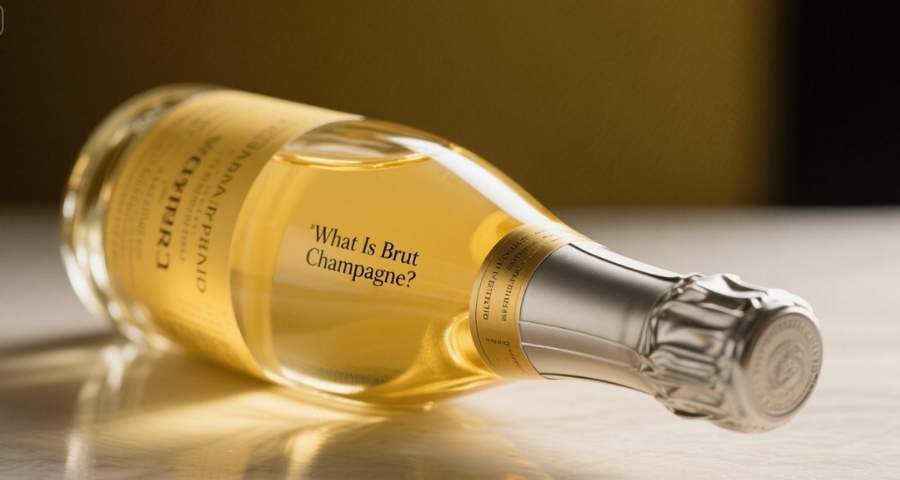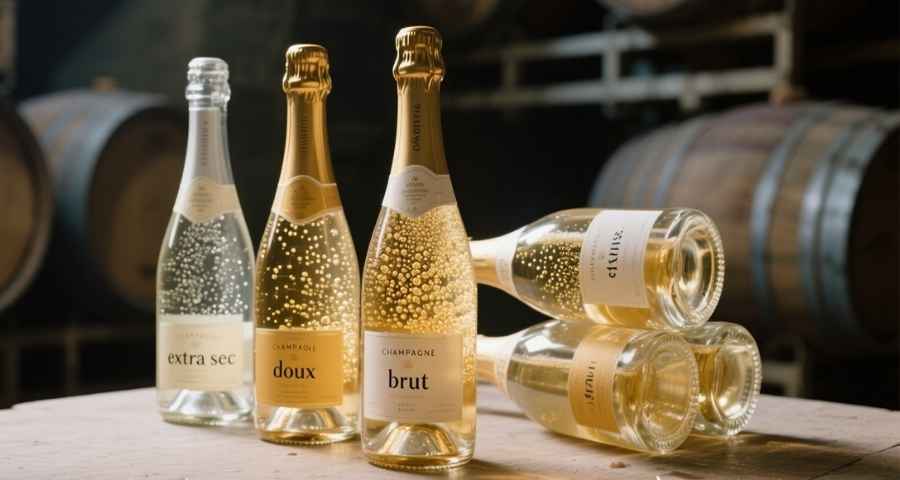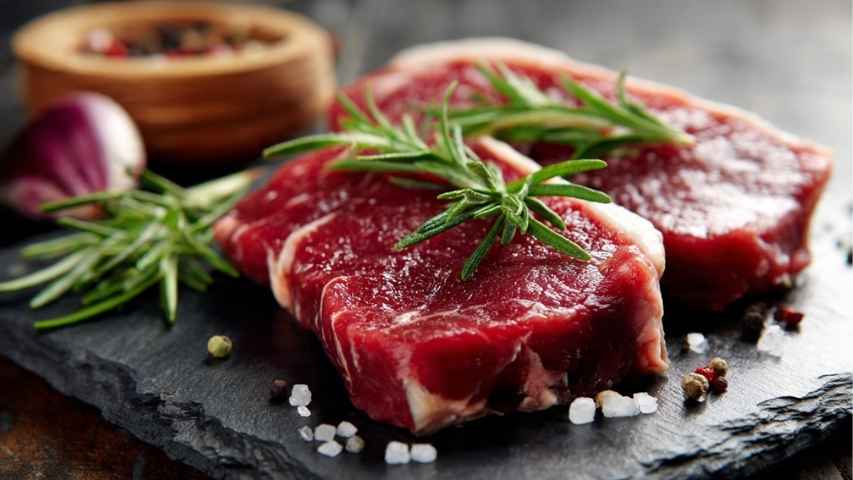If reading a Champagne label has ever left you confused, you’re in good company. Words like “extra dry,” “brut,” and “brut nature” can make it hard to know what you’re getting. These terms are just a way to describe how sweet the Champagne is, and knowing what they mean will help you choose the right bottle every time.
This guide covers all the basics about brut Champagne. You’ll learn what the term means, how sweetness is measured, and what sets a good brut apart. By the end, you’ll feel ready to pick out Champagne with confidence.
So, What Is Brut Champagne?

Put simply, “brut” is a French term that translates to “dry” or “raw.” In the world of Champagne, it refers to a style of sparkling wine with very little sweetness. For a bottle to be labeled as brut, it must contain less than 12 grams per liter (g/l) of residual sugar. (Champagne: Gold standard for sparkling wines, 2025) This minimal sugar content results in a crisp, dry, and refreshing taste, making it the most popular style of Champagne worldwide.
In fact, over 90% of all Champagne produced falls into the brut category. (Champagne Part I: Introduction, n.d.) Think of it as the quintessential Champagne—a versatile classic that works for nearly any occasion. Mathieu Roland-Billecart, CEO of the renowned Champagne Billecart-Salmon, notes that while “brut” technically defines a wine’s sweetness level, it is also widely used to describe the signature, entry-level blend that represents a Champagne house’s core style.
Understanding Champagne Sweetness

Champagne’s sweetness is set during the last steps of making it. The wine is made with the méthode traditionelle, where a second fermentation happens in the bottle to create its famous bubbles.
Before the bottle is sealed with its final cork, the winemaker adds a mixture called “dosage.” This mixture consists of reserve wine and a specific amount of sugar. The dosage is crucial for balancing the wine’s high acidity and shaping its final flavor profile. The amount of sugar in the dosage, combined with any natural sugars left after fermentation, dictates where the Champagne falls on the sweetness scale.
The sweetness scale goes from “brut nature” (almost no sugar) to “doux,” which has over 50 grams of sugar per liter. (Champagne Sweetness and Dosage: 2025 Sweetness Levels Explained, 2025) It can be confusing, but “extra dry” Champagne is actually sweeter than brut, with 12 to 17 grams of sugar per liter. (Champagne Sweetness Levels Explained: Brut vs Extra Dry, 2024) Most people only notice sweetness above 4-5 grams per liter, so even “extra dry” still tastes fairly dry to most. (Sweetness Levels of Champagne, n.d.)
The Different Types of Brut
The brut category covers a wide range, from 0 to 12 grams of sugar per liter. (Champagne: sweetness scale, 2025) To help people choose, brut is split into two main types: Extra Brut and Brut Nature.
Extra Brut
“Extra brut” Champagne is even drier than regular brut, with only 0 to 6 grams of sugar per liter. (Puckette, 2025) With less sugar, these wines can taste sharper and more tart. Their crisp, zesty flavor pairs well with salty or rich foods. As Wine Enthusiast Tasting Director Anna Christina Cabrales says, “For anything that falls under the extra brut style, reach for something salty or something you’d want to pinch some lemon on.”
Brut Nature (or Brut Zero)
“Brut nature,” also called “brut zero” or “zero dosage,” is the driest Champagne style. These wines have no added sugar, so the only sugar left (0-3 grams per liter) is what remains naturally after fermentation. (Vincent Cuillier L’Arbre Blanc de Noirs Brut Nature, n.d.)
This lack of added sugar creates a wine that is lean, mineral-driven, and incredibly precise. Many experts consider brut nature to be the purest expression of Champagne’s terroir, as there is no sweetness to mask the underlying characteristics of the grapes and the land where they were grown. Guillaume Lete, the Chef de Cave of Champagne Barons de Rothschild, explains that a brut Champagne will feel rounder and creamier, “whereas a brut nature will be more mineral, with more tension.”
What Makes a Good Brut?
Since the brut category is so broad, there’s no one way to define a “good” brut Champagne. Quality depends on more than just sweetness. It’s really about the winemaker’s skill and the style of the Champagne house.
A great brut Champagne is balanced, with acidity, fruit, and gentle yeasty notes all working together. The bubbles should be fine and last, giving a creamy, elegant feel. No matter the style—standard brut, extra brut, or brut nature—the wine should taste complete and expressive.
Famous Champagne houses like Veuve Clicquot, Moët & Chandon, and Dom Pérignon are known for their main brut Champagnes. Each offers its own style, showing just how much variety there is within the brut category.
Finding Your Perfect Brut
Knowing what “brut” means helps you enjoy Champagne even more. It’s not just a label—it’s a clue to the style and taste inside. Whether you like the crisp feel of classic brut, the sharpness of extra brut, or the pure taste of brut nature, there’s a bottle out there for you.
The next time you’re celebrating a memorable moment or want to treat yourself, take a closer look at the label. Armed with your new knowledge, you can confidently choose a brut Champagne that perfectly suits your taste and makes any occasion feel a little more special.


